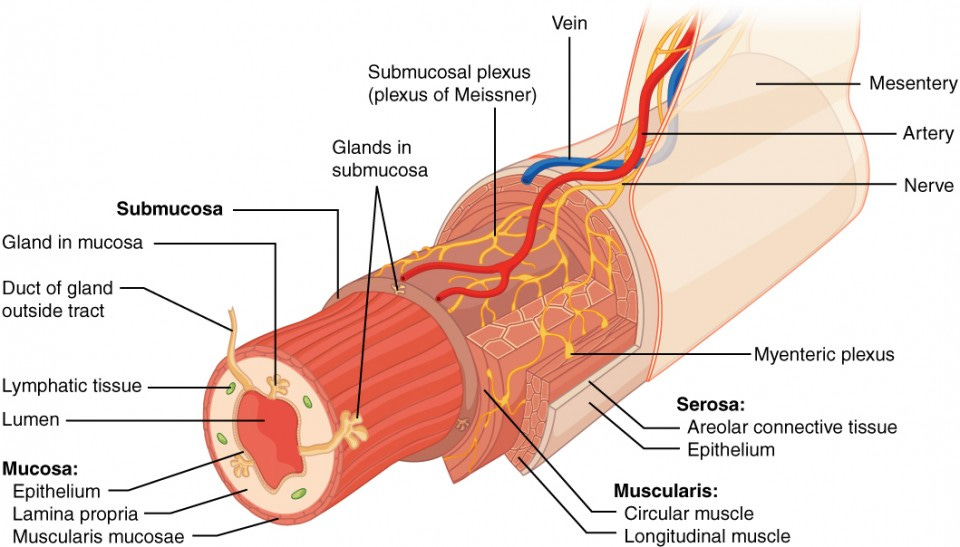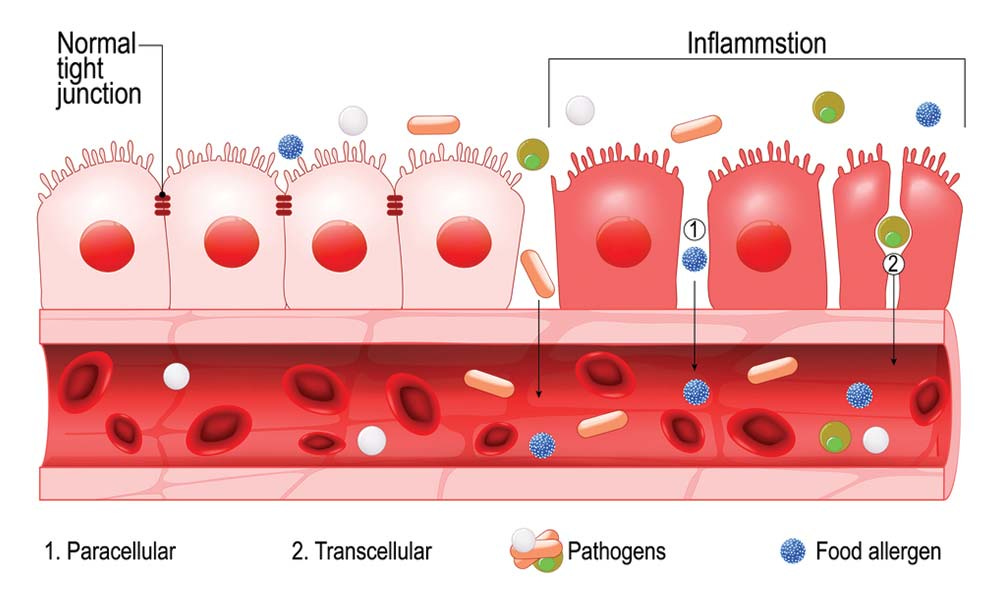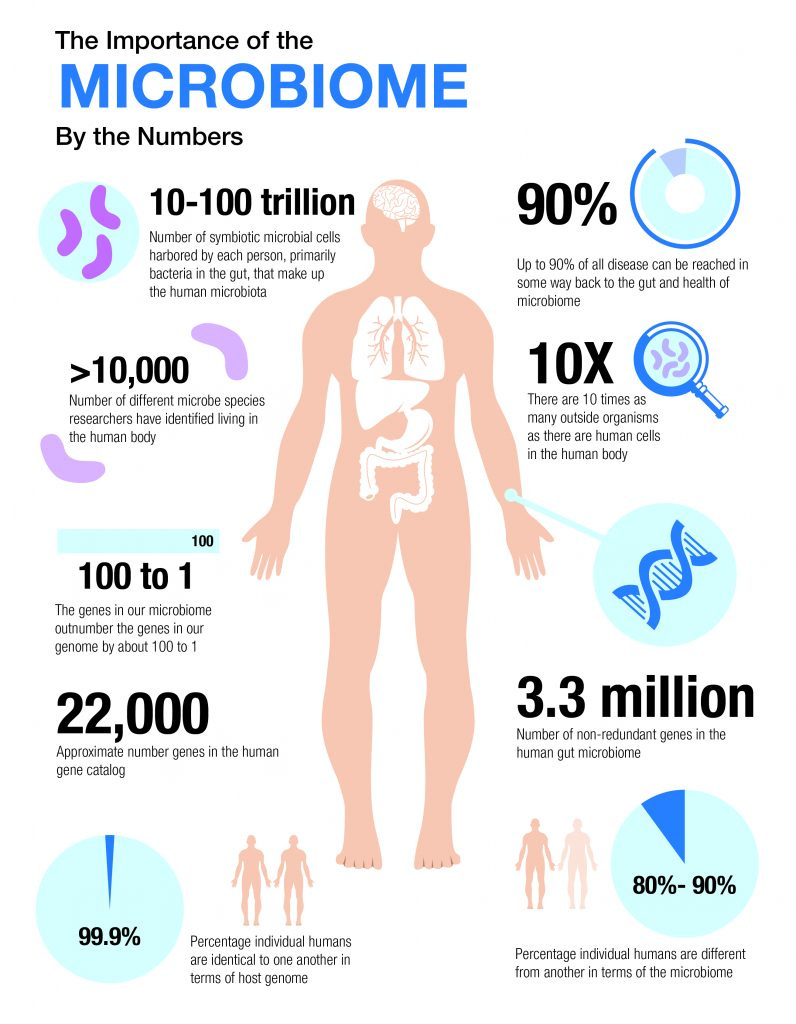
The gastrointestinal (GI) tract is considered the most exposed organ to the outside world, coming into contact with thousands of organisms and substances from the ingestion of food each day (Lopetuso, Scaldaferri, Bruno, Petito, Franceschi, & Gasbarrini, 2015). It also provides a complex barrier from the outside world to the delicate internal systems of the human body (Lopetuso et al., 2015). Such a system allows absorption of nutrients while guarding internal tissues from pathogens. Thus, dysregulation of the GI can negatively affect homeostasis of the human body. As a means of appreciating the GI system, the following will explore its structures and function, as well as diseases associated with gut dysfunction.

The GI tract is composed of a multi-layered system. The first layer is the physical barrier, preventing translocation of pathogens into the bloodstream. The second barrier is deeper, which is able to discriminate between pathogens and commensal (a symbiotic and beneficial relationship) bacteria (Lopetuso et al., 2015). The second layer is able to distinguish said organisms via immunological tolerance towards commensal organisms while mounting an immune response towards pathogens (Lopetuso et al., 2015). The following section will explore the second gut layer more deeply.

The second layer of the GI tract barrier is represented by a large network of immune cells, organized in a specialized structure known as gut associated lymphoid tissue or GALT (Lopetuso et al., 2015). The GALT is made of of lymphoid follicles and is one of the major lymphoid organs, containing up to 70% of the body immune cells (Lopetuso et al., 2015). Harbouring such a large percentage of the body’s immune system should prompt one to appreciate the need of a properly functioning GI tract, and dysregulation of the gut can lead to a host of illnesses.
It should be noted that an imbalance of the immune cells associated with the GI tract’s deep layer could allow the passage of luminal (intestinal cavity) contents into the bloodstream. Such passage (permeability) results in the activation of an immune response leading to inflammation of the gut lining (Lopetuso et al., 2015). Of particular relevance is that said gut alteration can provide a fertile ground for the development of several diseases such as infectious enterocolitis, inflammatory bowel diseases (IBD), irritable bowel syndrome, small intestinal bacterial overgrowth (SIBO), celiac disease, hepatic fibrosis, food intolerances and atopic (hypersensitivity to allergens) reactions (Lopetuso et al., 2015).

Another constituent of the GI tract includes the microorganisms that take residence within the host. Fungus, viruses, and bacteria make up an ecological system known as the microbiota (Lopetuso et al., 2015). Such a system plays multiple roles such as providing a barrier, assisting in immune stimulation, synthesizing vitamins and hormones, and metabolizing nutrients, drugs, and toxins (Lopetuso et al., 2015).
In conclusion, the GI tract’s selective permeability and microbiome are essential in guarding the human body from disease and pathogenic organisms. Although the aforementioned sections are not an exhaustive exploration of the GI tract, it should serve as a reminder that well functioning gut is central to maintaining homeostasis.
References
Lopetuso, L. R., Scaldaferri, F., Bruno, G., Petito, V., Franceschi, F., & Gasbarrini, A. (2015). The therapeutic management of gut barrier leaking: the emerging role for mucosal barrier protectors. European Review for Medical and Pharmacological Sciences, 19(6), 1068-1076.
-Michael McIsaac
